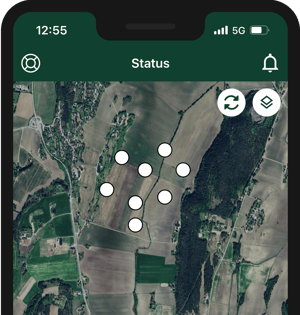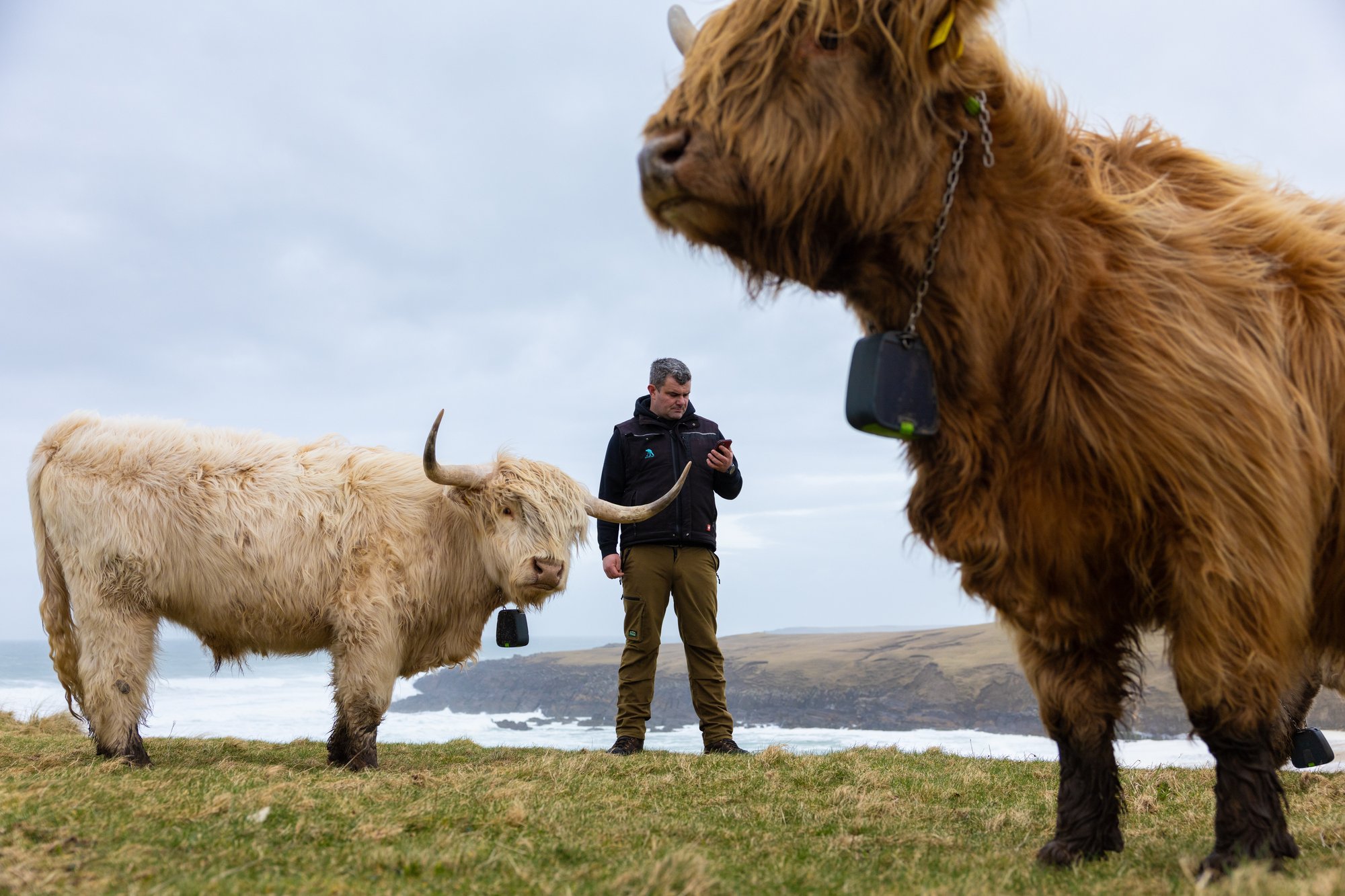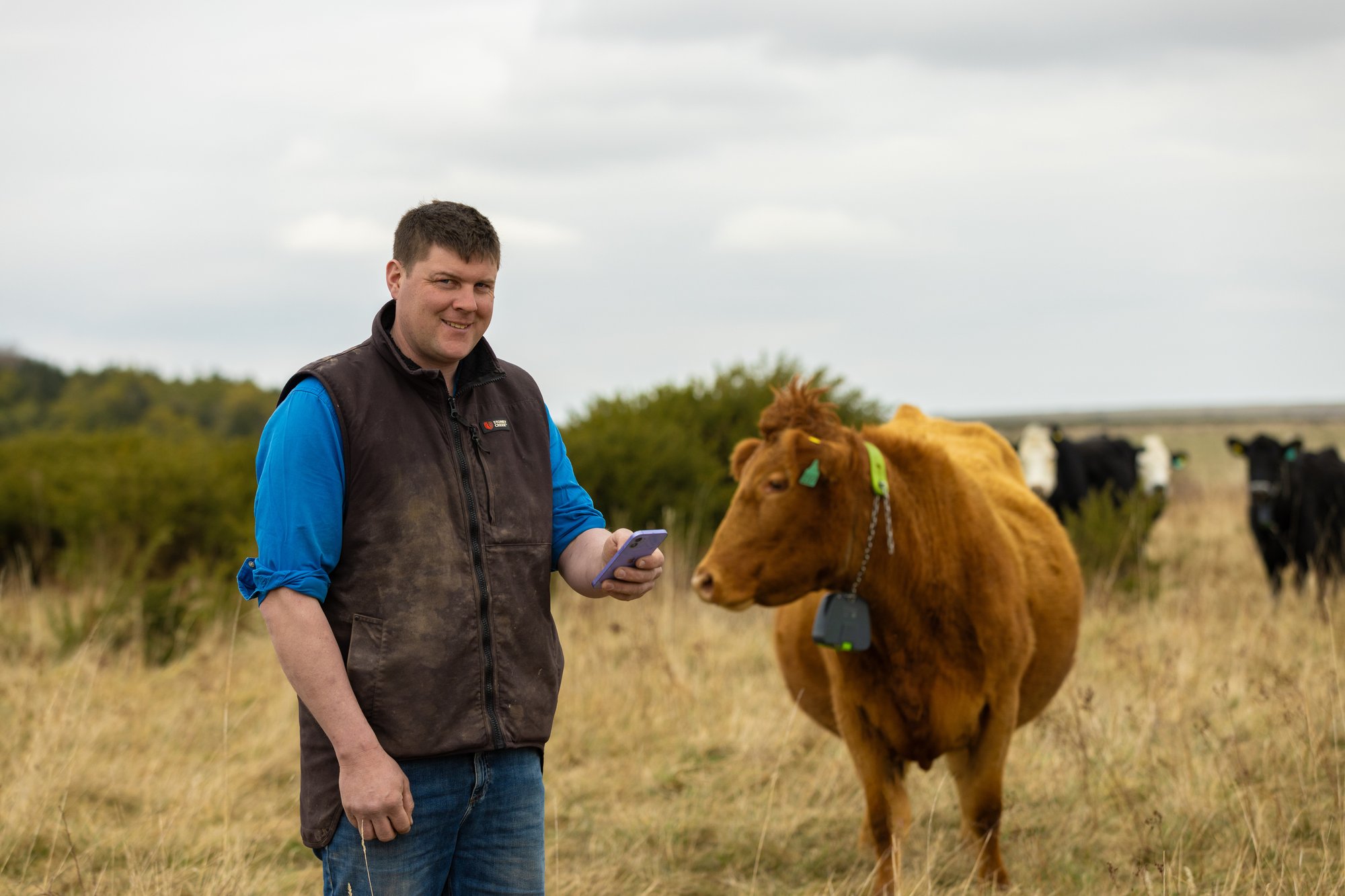
Grazing smarter on Salisbury Plain
James Waight runs a seventh-generation farm on Salisbury Plain, balancing cattle grazing with military activity and conservation. With Nofence, he’s replaced unreliable fencing, gained control over grazing in protected areas, and improved both land management and
livestock safety.
James Waight runs a seventh-generation family farm in Wiltshire, UK, managing 450 breeding Angus cattle on an 8,000-acre estate. The land, located on Salisbury Plain, isn’t just farmland, it’s also a Ministry of Defence (MOD) training area, a protected conservation site, and home to some of the rarest grassland habitats in Europe. Balancing livestock management, military operations, and environmental stewardship has always been a challenge. But with Nofence, James found a way to make it work.
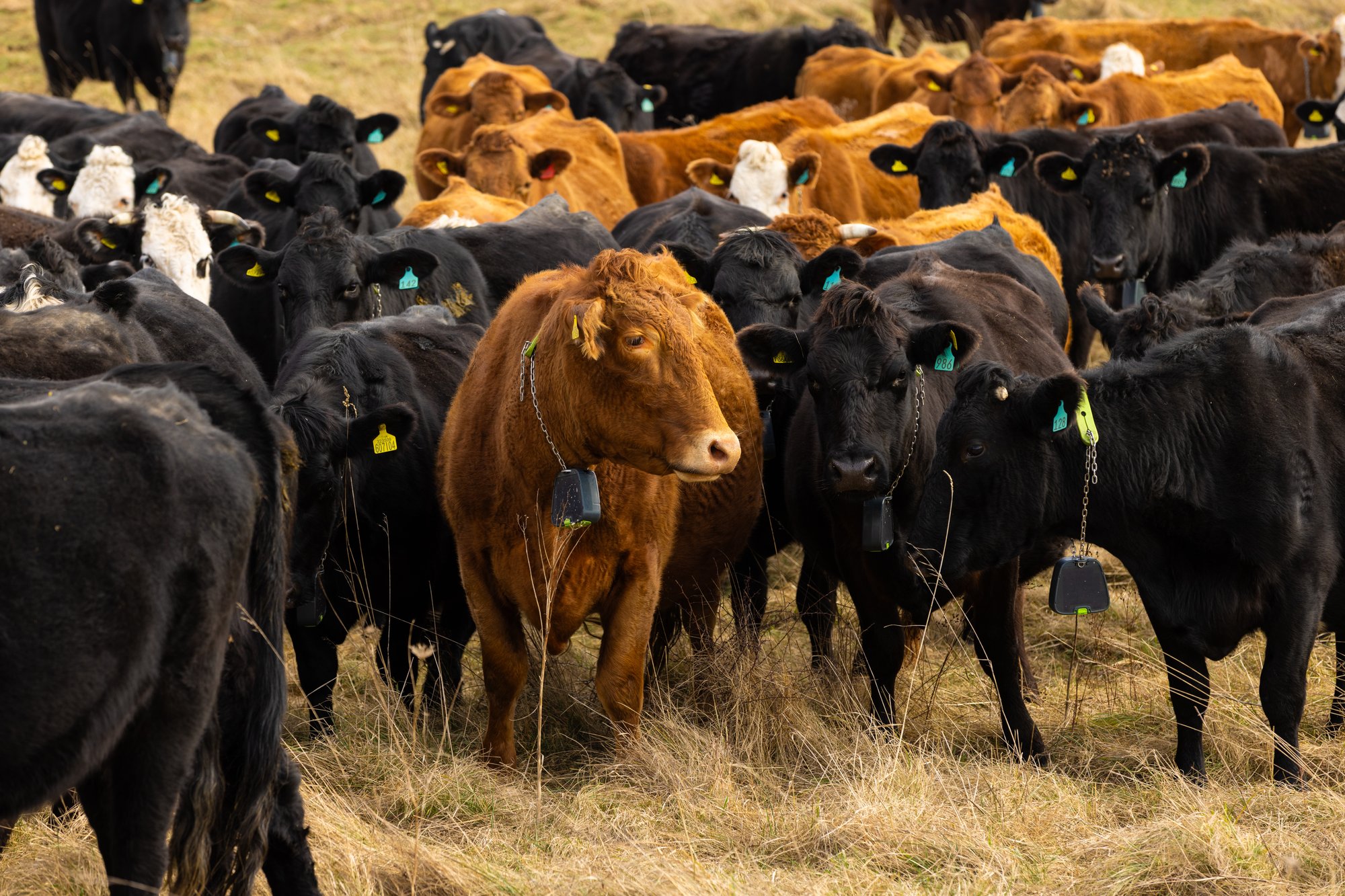
“Nofence has completely changed how we operate. Historically, we spent hours putting up and repairing electric fences. Now, I can adjust grazing areas remotely.”
— James Waight
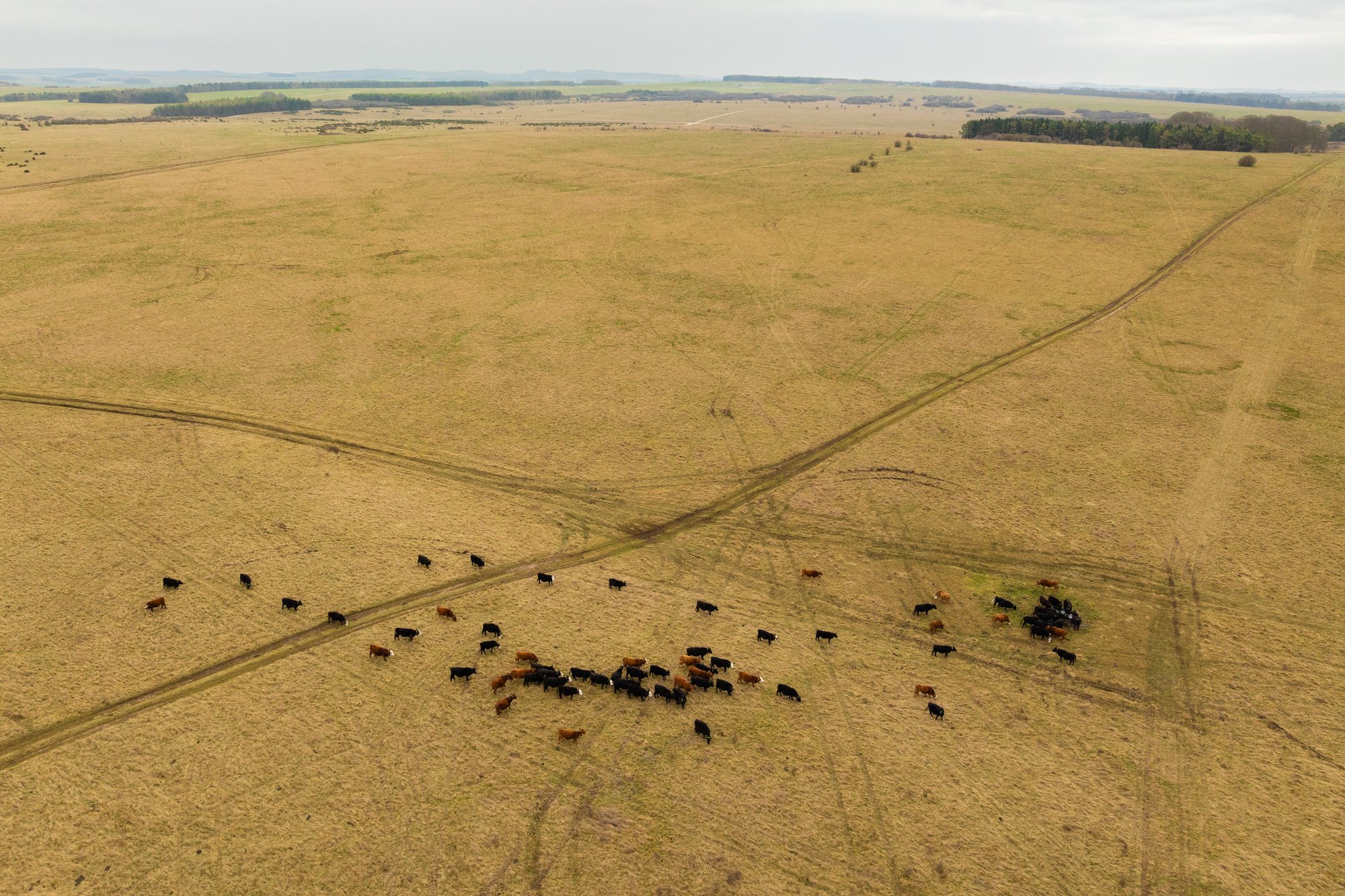
Grazing without boundaries
Grazing cattle on a live-firing range presents risks that few farmers ever have to consider. Temporary electric fences were the only viable option in the past, but they were far from reliable. Wires were often broken by deer, leading to costly escapes and safety concerns. Moving cattle around the training schedule was a logistical headache, and setting up fences across the rugged chalk grassland took up valuable time and labor.
“Nofence has completely changed how we operate. Historically, we spent hours putting up and repairing electric fences. Now, I can adjust grazing areas remotely.”
Since adopting Nofence five years ago, James has been able to manage his herd with far greater precision, keeping cattle safe while ensuring the land is grazed at the right times. The ability to track the herd in real-time has also been a game-changer for livestock health and welfare.
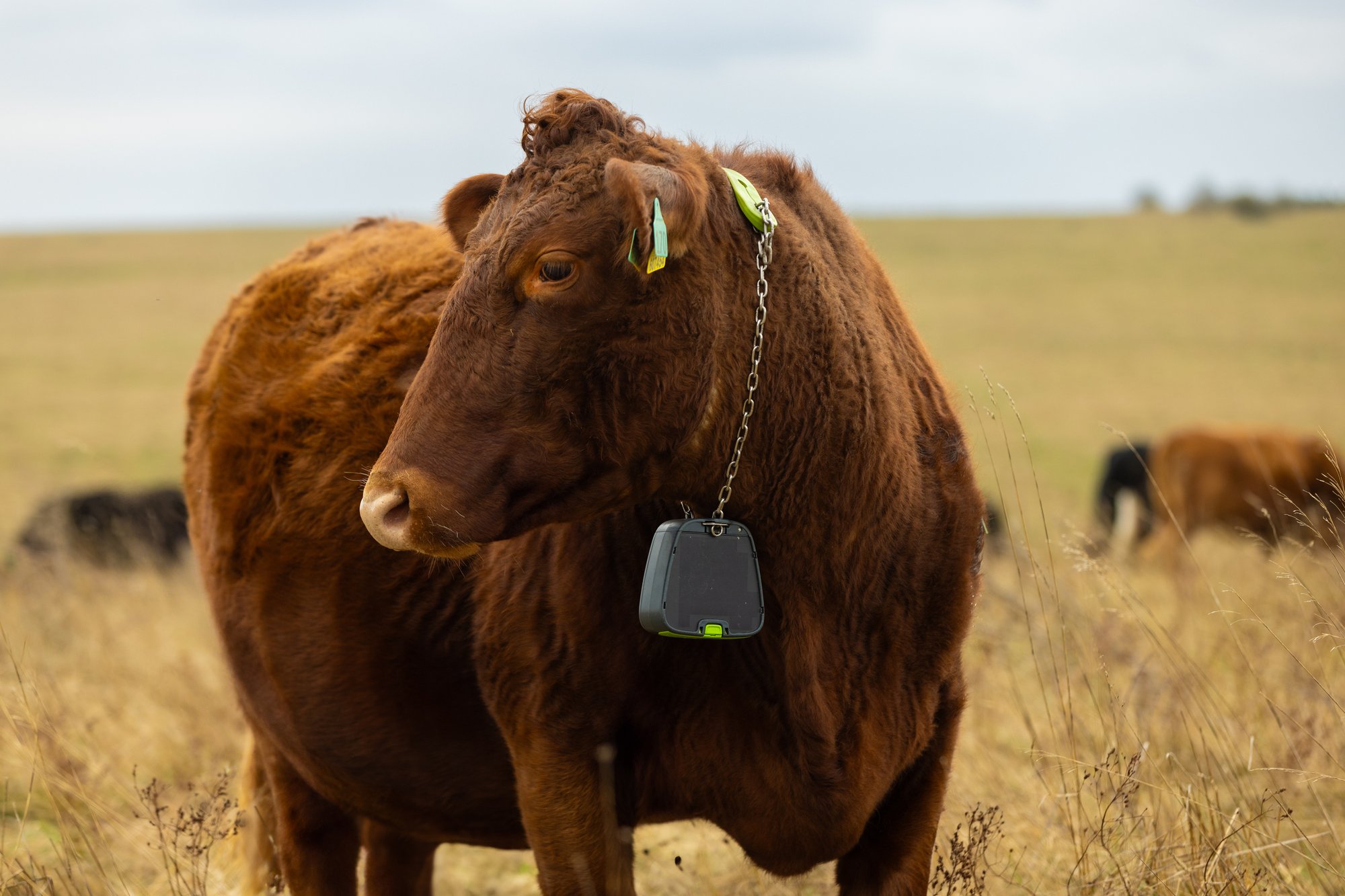
“We’ve saved a half a labor unit because we no longer spend time setting up and patrolling fences.”
— James Waight
More time, less labour
With fewer fences to install and patrol, James has drastically reduced the time spent on infrastructure maintenance. “We’ve saved half a labor unit because we no longer spend time setting up and patrolling fences,” James explains. Instead of constantly chasing fence repairs, James and his team can focus on herd planning, conservation efforts, and family life. The reduced need for vehicle patrols has also cut wear and tear on farm equipment, further driving down costs.
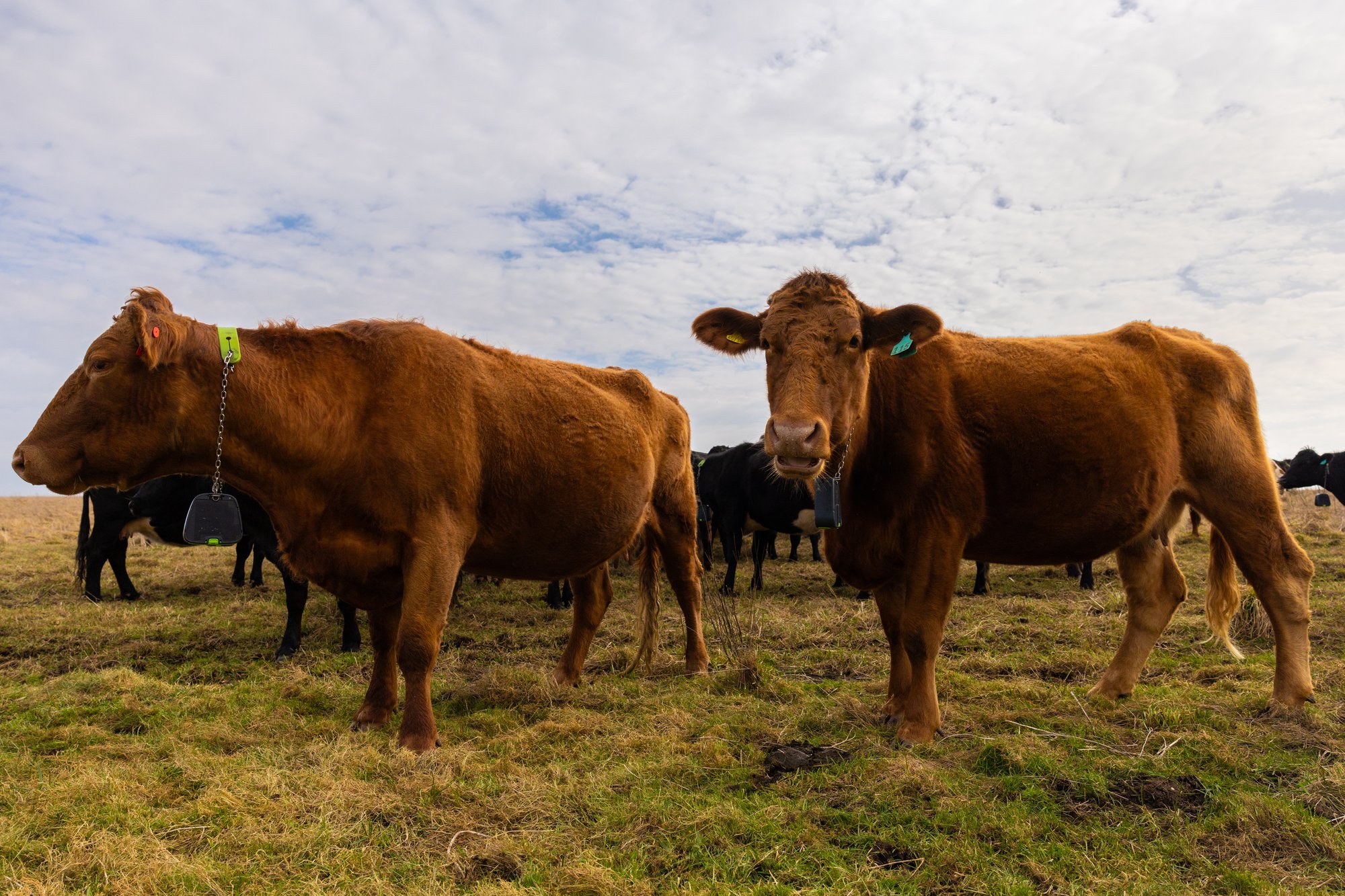
“It’s so much more flexible now. Before, there were areas we simply couldn’t graze because getting a fence up was too tricky. Now, we can adapt on the go.”
— James Waight
Conservation and fire prevention
Salisbury Plain is a haven for rare wildlife, including the marsh fritillary butterfly, which depends on carefully grazed grasslands to thrive. With Nofence, James can fine-tune his grazing strategy to support conservation efforts, creating corridors that allow delicate plant species to flourish without being smothered by dominant grasses.
“It’s so much more flexible now. Before, there were areas we simply couldn’t graze because getting a fence up was too tricky. Now, we can adapt on the go.”
Grazing also plays a crucial role in wildfire prevention. Dry grass is a major fire risk, especially in areas where live ammunition is used. By strategically rotating cattle, James is actively reducing the fuel load, lowering the risk of uncontrolled fires while maintaining the health of the landscape.
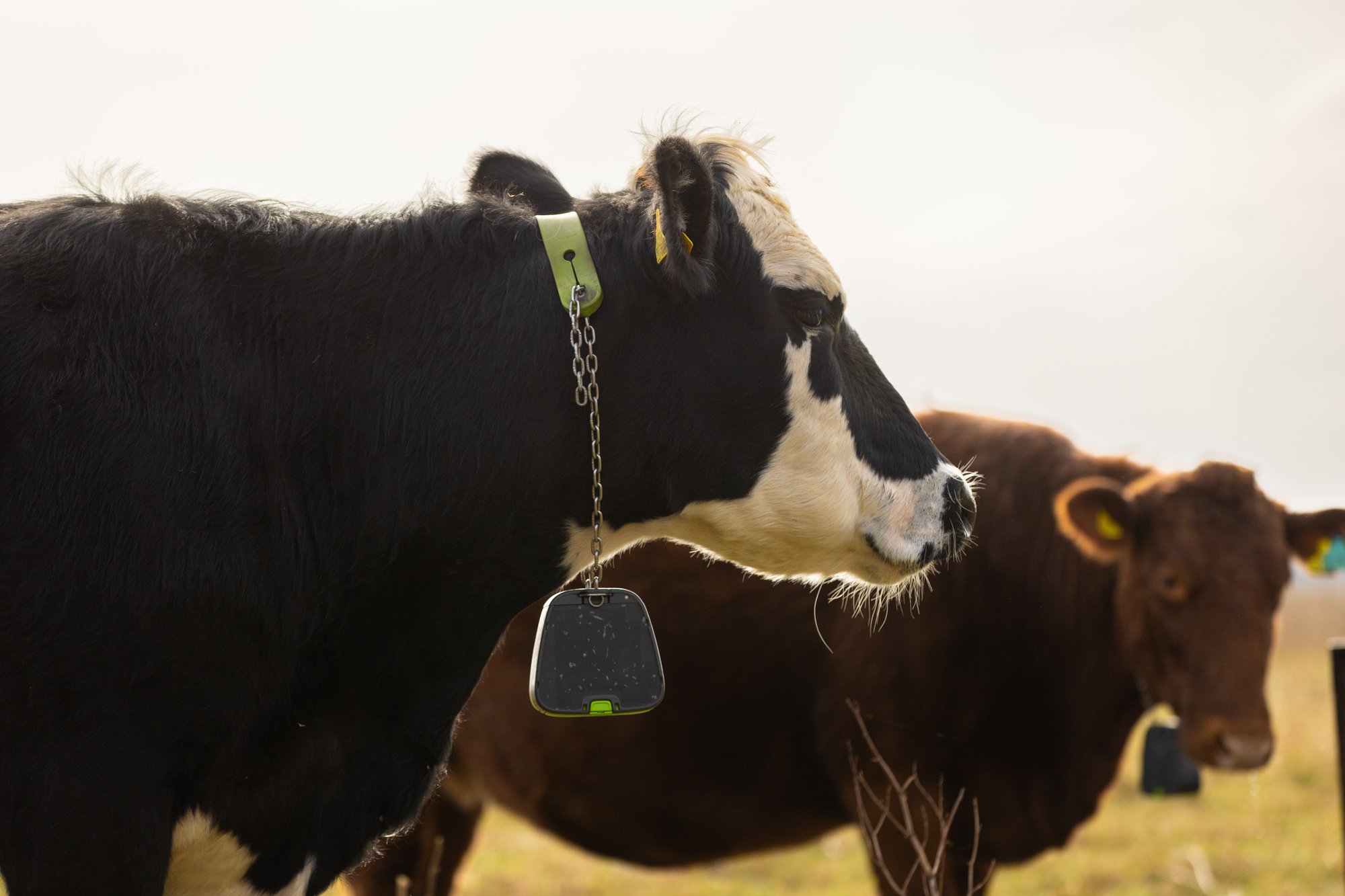
A decision that paid off
James didn’t start using Nofence just for novelty, he chose it because it truly solved a challenge he was facing. It eliminated the frustration of unreliable fencing, improved livestock safety, and gave him greater control over his land. Looking back, he feels confident it was the right choice for him.
“The best thing we ever did. Our operation is more efficient, our cattle are safer, and we have more control than ever before.”
For James, virtual fencing isn’t just about making life easier, it’s about making farming more efficient. And on Salisbury Plain, where every decision impacts both the military and the environment, that’s exactly what’s needed.
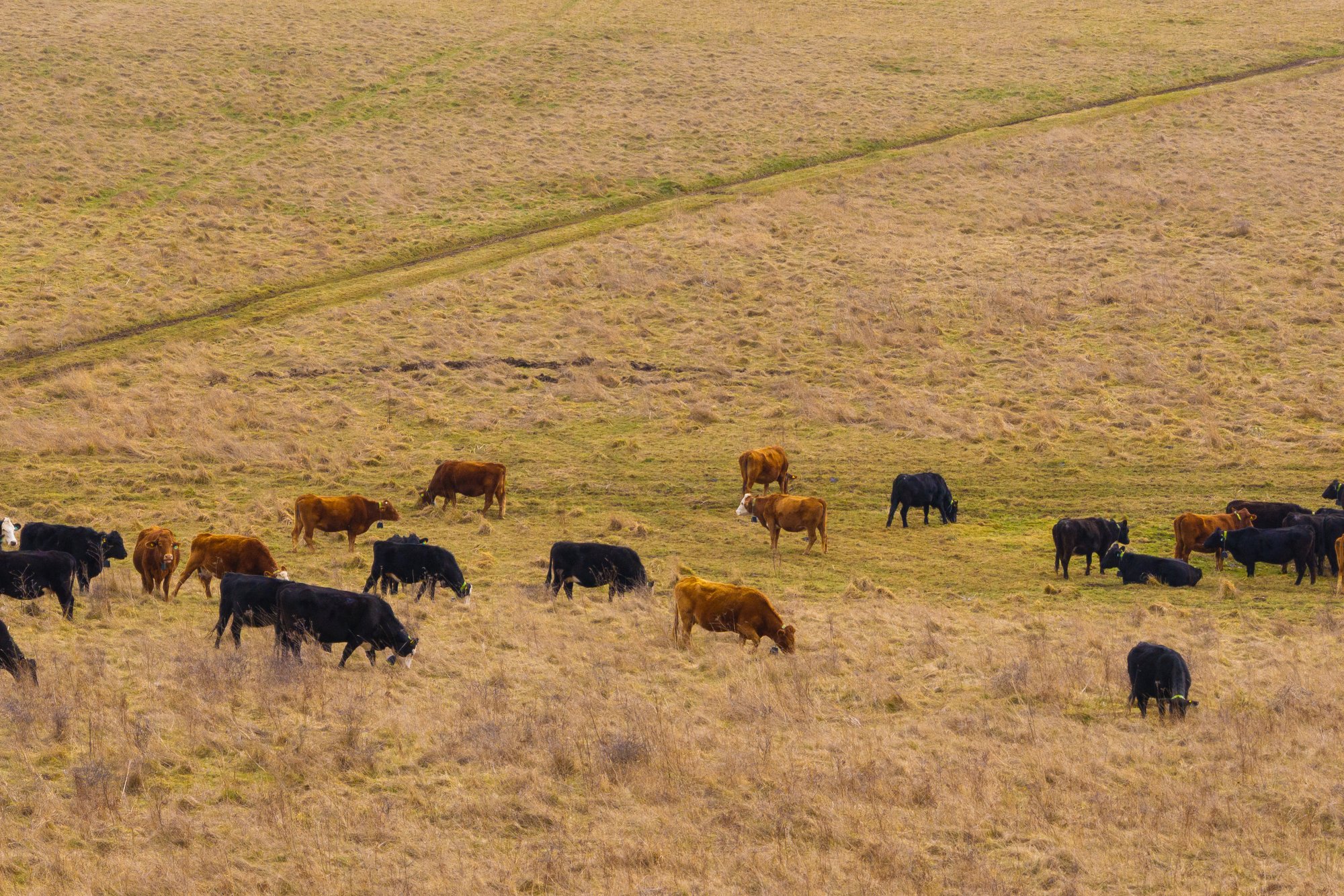
Maximizing grazing flexibility on Scottish Highlands
Maximizing grazing flexibility on Scottish Highlands
David Girvan farms in the Scottish Highlands, where Nofence helps him graze more efficiently across vast, unfenced hill ground and nature reserves. As he transitions to organic farming, virtual fencing supports his goals of lowering inputs, improving animal welfare, and protecting sensitive habitats.
Isle of Lewis crofter transforming grazing management
Isle of Lewis crofter transforming grazing management
Donald MacSween, a crofter based in the picturesque Isle of Lewis, Scotland, is redefining agricultural practices on his croft. With a background in conservation and a passion for sustainable farming, Donald has found a powerful ally in Nofence’s virtual fencing technology.
Maximizing grazing flexibility on Scottish Highlands
Maximizing grazing flexibility on Scottish Highlands
David Girvan farms in the Scottish Highlands, where Nofence helps him graze more efficiently across vast, unfenced hill ground and nature reserves. As he transitions to organic farming, virtual fencing supports his goals of lowering inputs, improving animal welfare, and protecting sensitive habitats.
Isle of Lewis crofter transforming grazing management
Isle of Lewis crofter transforming grazing management
Donald MacSween, a crofter based in the picturesque Isle of Lewis, Scotland, is redefining agricultural practices on his croft. With a background in conservation and a passion for sustainable farming, Donald has found a powerful ally in Nofence’s virtual fencing technology.
Ready to transform your livestock management?
We have collars in stock for both cattle and small ruminants.
